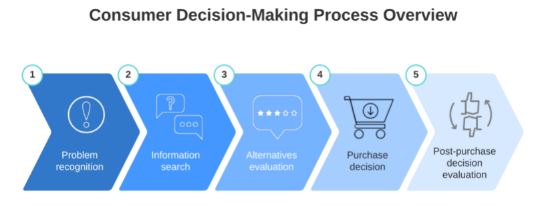To What Extent Does The Internet Influence The Consumer Decision-Making Process?
The consumer decision-making process illustrates the certain stages consumers experience before making a final purchase decision. In general, this decision-making process is acknowledge to be an extraordinarily complex model which is affected by numerous factors, such as personal, situational and socio-cultural influences. However, the decision-making process also varies according to the type of product (hedonic or utilitarian) and to the degree of involvement.
This project provides an insight into the different stages of the consumer decision-making process and identifies possible factors which might influence this process. Moreover, the increasing significance of the Internet has considerably affected the consumers‟ decision-making process, in particular their pre-purchase behaviour. This can be mainly attributed to the wide variety of product information online available as well as to interactive decision aids, which allow consumers to compare different products in-depth.
However, despite all the means provided by the Internet, there are still concerns associated with its use for information search or online purchase which might affect consumers attitudes towards the use of the Internet in a negative way. When deciding which information sources to consult, factors such as trust and believability play an important role in the consumers decision-making process.However, the study also demonstrates that event tough consumers regard certain information as credible, they prefer to consult a variety of information sources in order to minimise the risk associated with the purchase.
Nevertheless, it has to be taken into consideration that the stages of the decision-making process vary according on the consumer‟s level of involvement, as consumers devote more effort to their information search and the different evaluation stages if the purchase is considered to be of high risk.
- 10,000 words – 70 pages in length
- Excellent use of literature
- Interesting piece of work
- Good in depth analysis
- includes questionnaire
- Ideal for business management students
1. Introduction
Introducing the topic
Aims and Objectives
Summary of chapters
2. Literature Review
Introduction: Understanding the consumer decision-making process
The consumer decision-making process
Problem recognition and information search
Evaluation of alternatives and purchase
Post-purchase evaluation
The degree of involvement
The influence of hedonic and utilitarian goods on consumer’s decision-making process
Other influences on the customer decision-making process
The influence of the Internet on the consumer decision-making process
Reasons for online shopping
The impact of interactive decision making aids on consumer decision-making
Advantages of online shopping
Constraints of online shopping
Conclusion
3. Methodology
Research approach
Data sources and collection method
Secondary data
Primary Research
Research type
Data collection
Questionnaire design
Advantages of questionnaires for primary data collection
Limitations of primary data collection/ questionnaires
Sample
Pilot testing
Ethical implications
4. Findings and Analysis
Profile of the sample
Consumer‟s decision-making process: Use of information sources
Believability of information sources
The media
Recommendations from friends / family members
Salespeople / Experts
Review in consumer reports
Online recommendations
Influences of information sources on the consumer decision-making process
Word of mouth (WOM) recommendation
Newspaper advertisements and TV commercials
Review in consumer reports
Online recommendations
General online shopping behaviour
Consumers online purchase behaviour
Product recommendations
Reasons and perceived advantages of online shopping
Time-saving and availability
Convenient and increased choice
Price
Constraints of online shopping
Security issues and financial risk
Lack of physical contact
Other constraints
Conclusion
5. Conclusions
Concluding statement
Limitation of the study
Further research
References
Bibliography
Appendices

